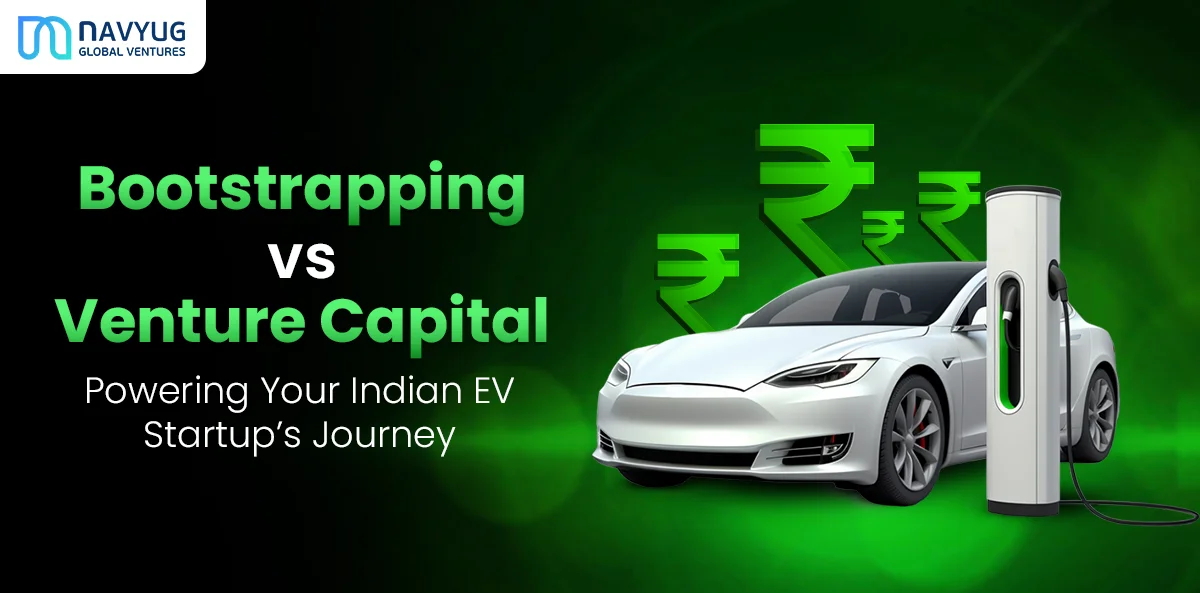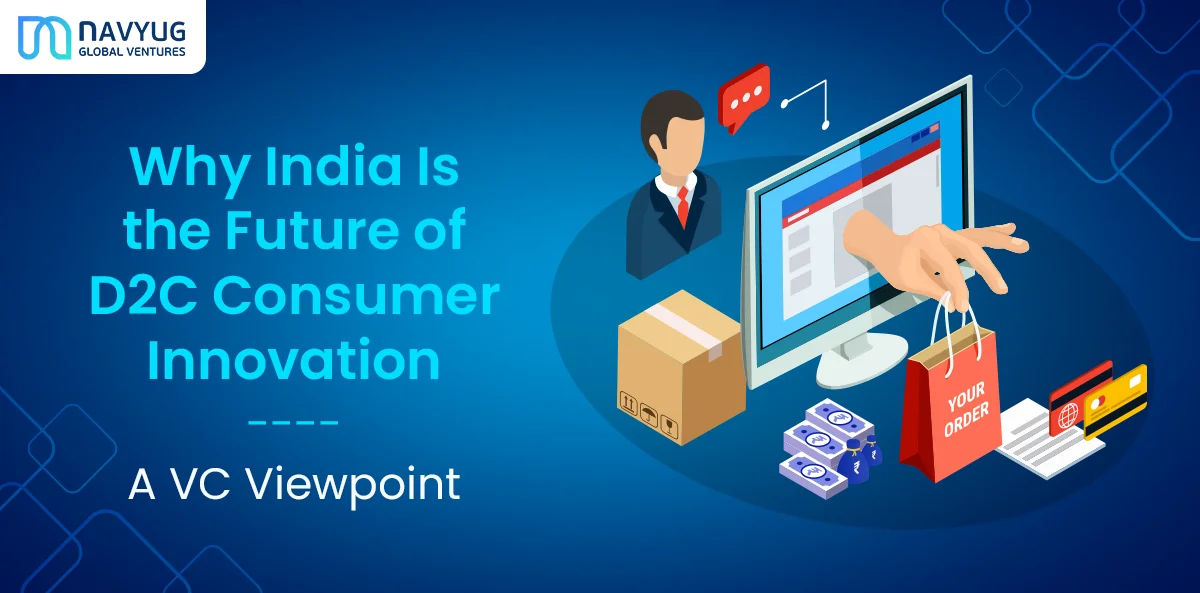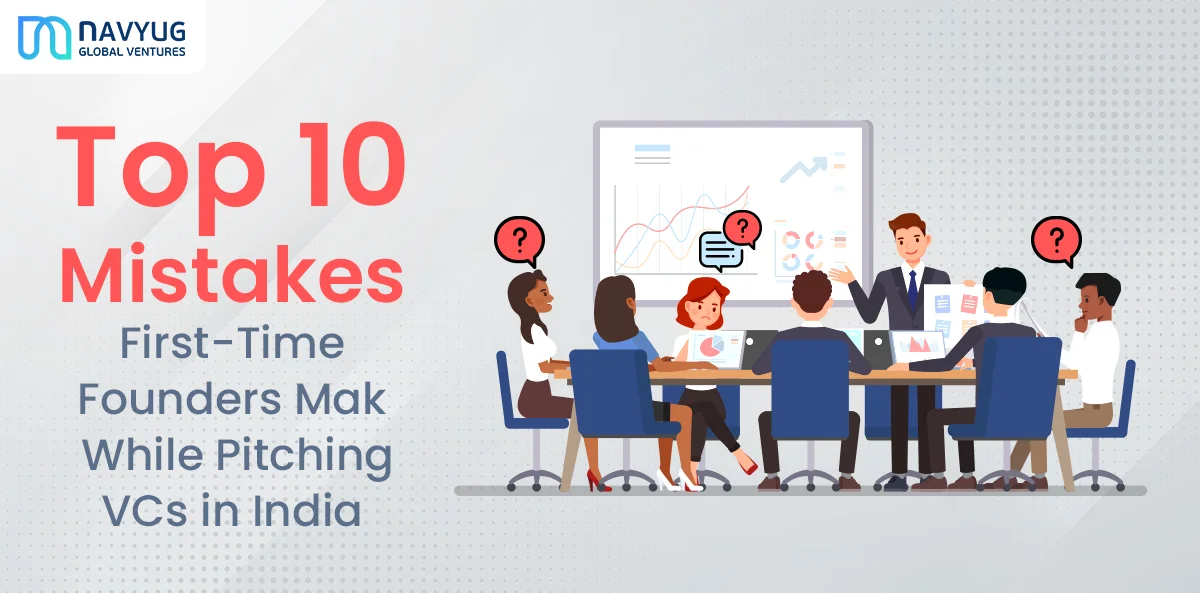Electrifying growth in India’s electric vehicle sector hinges on funding. Should ambitious EV startups in India drive forward on their own capital or accelerate with venture backing? Discover the pros and cons of each approach and find out which strategy can power your EV venture to the fast lane—read on!
The electric-vehicle market in India is growing at a very fast rate, and bold businesspeople are at the forefront. There is however a central difficulty of getting the capital necessary to translate a powerful vision into a viable business. In general terms, founders have options of either disciplined self-funding (bootstrapping) or investment by venture capital companies in India. The discussion below evaluates these approaches to help electric vehicle or E-Mobility funding decisions align with each startup’s growth objectives and operational realities.
The EV funding reality in India
The electric vehicle industry in India is at a break even point. EV startups funding increased more than twice than the last year despite the decline in the number of deals funded. Investors are spreading their bets through the EV value chain and are requiring more clear ways to benefit. These changes have attracted capital into the industry, yet capital is not evenly distributed, and many founders are still forced to deal with high-cost and extended lead times..
Why EVs are capital‑intensive
EV manufacturing requires more upfront investment than software or service startups. Batteries account for 35–45 % of an EV’s cost (source) and require long supply chains and high working capital. Homologation and compliance testing add costs. Building tooling for metal parts and battery packs can require millions before a single sale. As one report notes, EVs are capital‑intensive with funding requirements exceeding those of conventional technology businesses (source). Financing models in India highlight that the battery alone makes up 30–40 % of vehicle cost (source), often prepaid like fuel, which strains working capital. Supply chains are globally dispersed; reliance on imported cells exposes startups to currency risk and long lead times.
Typical runway needs pre‑ and post‑launch
The runway of EV startups in the early stage is usually longer in comparison to pure-software startups. The prototype and homologation stage may require 1218 months and money is wasted on research and development, tooling and certifications. Another 12-24 months is, in most cases, necessary to ramp production, establish dealer networks and service infrastructure, post-launch. Due to large working capital and cost of batteries, the founders should expect a minimum of 18 24 months of cash between fund-raises to endure delays in supplies and government approvals. To learn more about the current trends, see the analysis of Investment Trends in EV Startups in India by Navyug.
What is bootstrapping for an EV company?
Bootstrapping is starting and expanding a business with little external funding. At the initial stages, founders finance with personal savings, initial revenues and other low-cost, innovative financing schemes. This strategy retains ownership and decision making power since it is not bound to any external investor. It also instils discipline and creativity, as teams get to know how to concentrate on the necessities and to come up with effective methods of achieving milestones at least when they start discussing their plans with potential backers. Although resource constraints may be intense, bootstrapping enables the opportunity to expand at a sustainable rate and take decisions according to the long-term viability.
Pros and Cons of Bootstrapping Your Startup
There are numerous obvious benefits of bootstrapping to startups. It enables founders to retain complete ownership and control over their business, make decisions independently and make them without being pressured by investors and focus on continuing and long-term growth. Limited funds also foster creativity and discipline and teams get to learn how to spending money responsibly, how to try their ideas out and how to spend their profit to achieve even greater heights. It is the right method to approach venture capital firms in India or venture capital companies in India to take funds when the founders want to retain the ownership without giving up and rather choose the time when they have sufficient capital to venture into the international market.
Nonetheless, there are also problems with bootstrapping. Growth in such aspects as customer acquisition, hiring, and R&D can be hindered with fewer resources. Bootstrapped companies can sometimes find it challenging to grow into new markets, develop a product or to scale production fast, particularly in India where EV startups must spend a lot of money on manufacturing capacity, charging infrastructure and compliance. In cases where the required growth requests are beyond the internal cash flow, it would be necessary to seek the EV funding of institutional investors to be in a position to expand sustainably.
EV‑specific bootstrapping tactics
Electric vehicle startups can use practical, capital-light tactics to sustain progress until external funding becomes viable:
- Design for manufacturing: Use common components and modular designs to reduce tooling costs.
- Preorders or letters of intent: Secure commitments from fleets or early adopters to finance initial production.
- Pilot fleets: Deploy small fleets in specific geographies to generate data and revenue while validating reliability.
- Anchor customers: Partner with logistics or delivery companies for guaranteed volumes.
- Grant applications: Apply for non‑dilutive grants and subsidies (FAME II, state EV policies) to fund R&D and charging infrastructure.
For more practical insights on choosing between self-funding and external capital, read our bootstrapping vs venture capital: startup funding guide.
Venture capital for EV startups in India
Venture capital funding is a financing method whereby the company raises funds through the help of outside investors who are usually venture capital firms in india in exchange with equity. India Partnering with venture capital firms can open up large-scale capital, industry know-how and strategic connections that can be used to speed up scale. This path may be well adapted to any business that is seeking rapid growth, such as EV startups in India that need substantial investment in R&D, supply-chain development, and electric vehicle financing to produce and charge batteries. The trade-offs are equity dilution and joint control and therefore, founders must consider the terms of governance, chances of future growth, and timing, when ev funding, carefully before going.
Pros of Venture Capital
Among the key benefits of venture capital raising is the likelihood to access large amounts of capital and strategic capital which other funding sources can hardly offer. The advantages of collaboration with venture capital firms in India or venture capital companies in India are:
- Accelerated growth: Large capital base allows targeted investment in go-to-market, research, staffing, and geographic expansion and develops faster than capital bases of internal cash flows. This particularly applies to EV start ups in India that need electric vehicle capital of large scale manufacturing and infrastructure.
- Domain and contacts: Professional investors provide sector expertise, playbooks, and customer, partner, and senior hiring introductions, which come in handy to assist founders to overcome challenges and identify opportunities.
- Market credibility: The brand recognition that comes with association with respected funds is a sign of quality, which is more easily won by customers, talent, and follow-on ev funding.
- Strategic advice: VC firms boards and advisors may aid in making key decisions such as pricing, product roadmap, governance, and unit economics- based on the experience of previous portfolio companies.
- Ticket to a follow-up round: A startup which performs effectively following a first round is more apt to raise favorable capital, which can continue to drive the product development and market growth.
Cons of Venture Capital
Venture capital may provide significant capital and operating assistance, but may also cause dilution and limitations on founder control. In the assessment of india venture capital firms or venture capital companies in india, the following trade-offs should be taken into consideration:
- Dilution of ownership: Equity raised to outsiders will decrease the founders share, thereby restricting their ability to make important decisions and subsequent distributions.
- Growth prospects: VC investors seek excess returns over a set of time. This can tend to give precedence to the aggressive growth as compared to short-term profitability and it does not necessarily follow the pace desired by the founder.
These considerations are especially relevant for EV startups in India, where capital needs for manufacturing, supply chains, and charging infrastructure are high. Founders should weigh how electric vehicle funding requirements align with the timing and terms of ev funding, balancing scale ambitions with governance and long-term control.
What VCs look for in EV startups
Here’s what most India-focused EV investors scan for before leading a round:
- Unit economics and margin path: Investors scrutinise gross margin assumptions, battery cost curves and payback periods.
- Supply‑chain defensibility: Localization strategies, exclusive component partnerships and recycling plans show resilience.
- Certification progress: Evidence of safety testing, compliance with AIS 156/CMVR regulations and homologation schedules reassure investors.
- Pilot data and customer traction: Paid pilots with fleets demonstrate real‑world performance and reduce technology risk.
- Product–market fit signals: Repeat orders, rising utilisation rates and low service downtime indicate product fit.
Electric vehicle funding options beyond equity
Besides equity, EV founders should consider alternative electric vehicle funding tools.
Non‑dilutive options
- Government grants and subsidies: Programmes like FAME II and state EV policies provide purchase incentives, pilot subsidies and charging infrastructure grants.
- Corporate innovation programs: OEMs and energy companies often offer co‑development grants for battery management systems and charging solutions.
- Hardware credits and accelerator grants: Some accelerators provide equipment credits for prototyping and testing.
Debt and venture debt
- Inventory or equipment financing: Banks and non‑banking financial companies (NBFCs) offer loans to purchase battery packs and equipment. Flexible EMIs tied to vehicle usage help drivers with irregular incomes.
- Venture debt: Specialised lenders extend loans with warrants, providing capital without immediate equity dilution, though they may require rapid milestones and carry interest.
Strategic capital
- OEM partnerships: Collaborate with established automakers for joint production or technology licensing.
- Component joint ventures: Co‑develop battery cells or motors with suppliers to secure preferential pricing.
- Distribution advances: Fleet operators or distributors may fund tooling in exchange for long‑term supply agreements.
When to choose which path
Below is a simplified decision matrix to decide between bootstrapping, hybrid and venture funding. Stage refers to the company’s progress; Capital need reflects the cost of hitting the next milestone.
| Stage / Capital need | Low capital (₹0–10 cr) | Medium capital (₹10–50 cr) | High capital (₹50 cr+) |
|---|---|---|---|
| Prototype / Concept | Bootstrapping: self-fund R&D, build prototypes, apply for grants | Hybrid: angel investors and grants supplement savings | VC rarely invests at concept stage |
| Pilot / Early traction | Bootstrapping: fund pilot fleets with preorders and revenue | Hybrid: raise seed/angel round to finance homologation and tooling | VC: select investors may fund at Series A if strong pilot data |
| Scale / Growth | Hybrid: use revenue plus small loans to expand cautiously | VC: Series A/B to build manufacturing lines, supply chains, brand | VC: Large growth rounds to scale production and enter new markets |
A “hybrid path” is common- Bootstrap to create prototypes and secure 10–20 paid pilots, then raise a seed/Series A to fund manufacturing and network build‑out.
Step‑by‑step: From idea to first cheque
Follow this practical sequence to turn a working prototype into investor-ready traction and a clear capital story:
- Validate demand: Secure 10–20 paid pilots with fleet operators or delivery companies. Use these to gather performance and cost data.
- Lock key suppliers: Negotiate supply agreements for cells, motors and frames. Show a costed bill of materials and projected margin path.
- Show reliability: Document on‑road testing results like range, charge time and durability metrics to prove that the product meets market expectations.
- Build a capital plan: Outline use of funds by milestone like tooling, certification, marketing, working capital and identify break‑even volume.
- Prepare a targeted VC list: Identify venture capital firms in India with mobility experience. Craft an outreach narrative that highlights pilot traction, unit economics and supply‑chain defensibility.
Turning EV Vision into Scalable Reality with the Right Capital
The decision of whether to bootstrap or venture capital is based on your business intentions, rather than reputation. Bootstrapping can keep you flexible, focused and in control, however it restricts the rate at which you can grow. Venture capital, however, will provide access to larger amounts of money and contacts, but with investor expectations and partial loss of control. India is full of EV startups that start small, pilot, and are later joined by investors who see the difficulties of electric mobility. It is important to work on your business milestones and not the hype.
Navyug Global provides services to EV startups in India to develop milestone funding strategies, enhance cost-efficiency, and find the appropriate strategic partner and venture capital firms in India. In case you are choosing between bootstrapping and equity funding, our team will be able to assist you in writing your story, showing your pilot data, and certifying it. Our startup funding guide is a place to begin.
FAQ about Bootstrapping vs Venture Capital
What are the pros and cons of bootstrapping an EV startup in India?
Bootstrapping preserves founder control and encourages frugal innovation. Founders retain full equity and make fast decisions but must operate with limited resources. This can slow scale, restrict vendor credit and make it harder to hire top engineers. For EV startups, bootstrapping often involves design‑for‑manufacture and securing preorders to finance tooling.
How do venture capital companies in India evaluate EV startups?
Which is better for EV startups in India: venture debt or equity?
How much EV funding do I need for pilot vs scale?
Where can I find venture capital firms in India for EV?
You can find a curated list of mobility‑focused venture investors on Navyug Global’sventure capital firms in India page.



